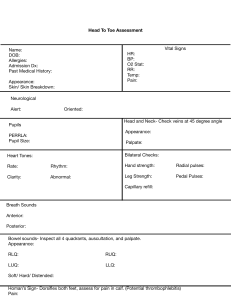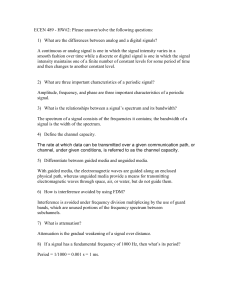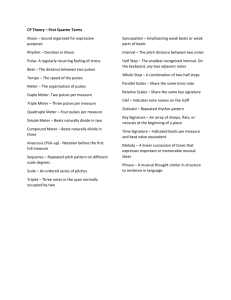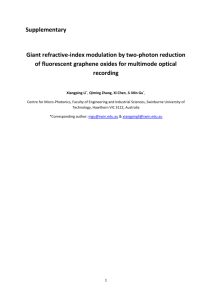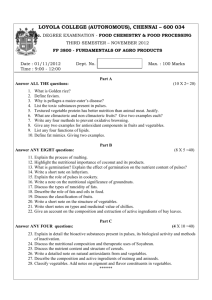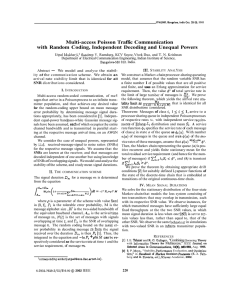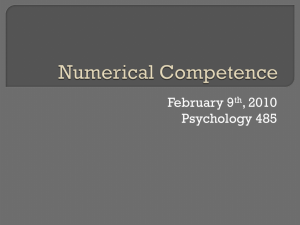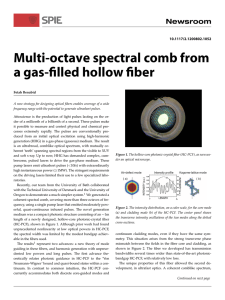COLUMBIA UNIVERSITY Department of Electrical Engineering EE E4703:
advertisement
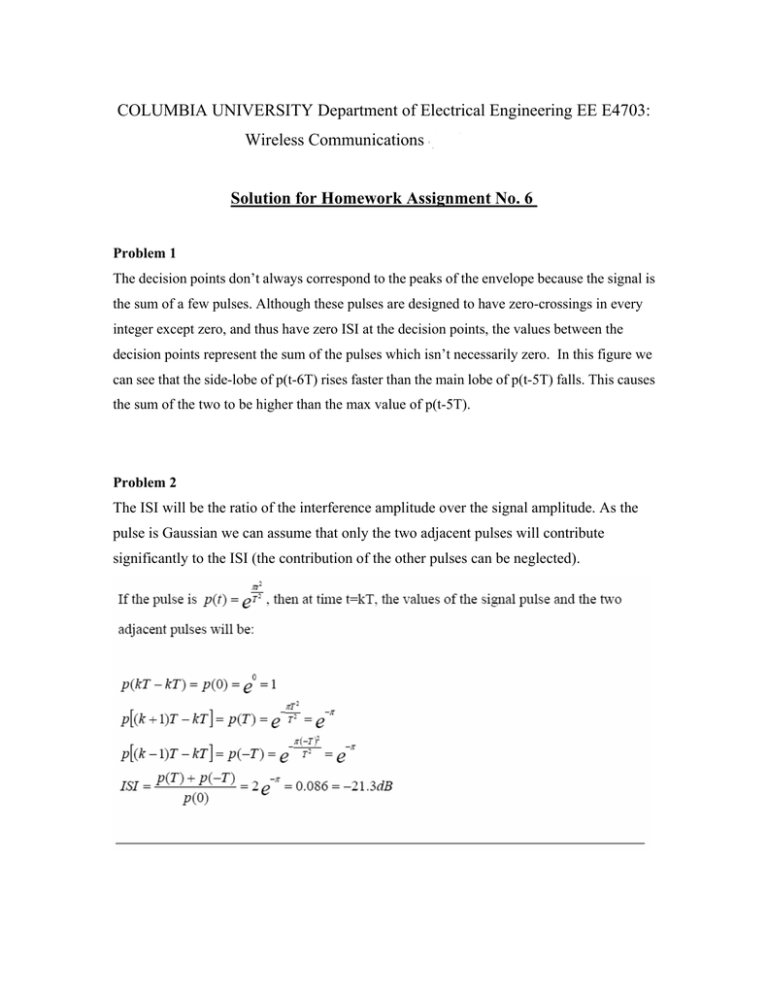
COLUMBIA UNIVERSITY Department of Electrical Engineering EE E4703:
Wireless Communications (Spring 2005)
Solution for Homework Assignment No. 6
Problem 1
The decision points don’t always correspond to the peaks of the envelope because the signal is
the sum of a few pulses. Although these pulses are designed to have zero-crossings in every
integer except zero, and thus have zero ISI at the decision points, the values between the
decision points represent the sum of the pulses which isn’t necessarily zero. In this figure we
can see that the side-lobe of p(t-6T) rises faster than the main lobe of p(t-5T) falls. This causes
the sum of the two to be higher than the max value of p(t-5T).
Problem 2
The ISI will be the ratio of the interference amplitude over the signal amplitude. As the
pulse is Gaussian we can assume that only the two adjacent pulses will contribute
significantly to the ISI (the contribution of the other pulses can be neglected).
Problem 3
(a) ASK:
⎛ Eb ⎞
⎟ = 10 −6
Pr{e} = Q⎜⎜
⎟
⎝ 2N0 ⎠
2
E
SNR = b = 2 Q −1 10 −6 = 2 ⋅ 4.752 = 45.125 = 16.54dB
N0
[ ( )]
(b) FSK:
⎛ Eb ⎞
⎟ = 10 −6
Pr{e} = Q⎜⎜
⎟
N
0 ⎠
⎝
2
E
SNR = b = Q −1 10 −6 = 4.752 = 22.563 = 13.53dB
N0
[ ( )]
(c) BPSK:
⎛ 2 Eb
Pr {e} = Q ⎜⎜
⎝ N0
⎞
⎟ = 10 − 6
⎟
⎠
[ (
Eb
Q −1 10 − 6
SNR =
=
N0
)]
2
4 .75 2
=
= 11 .281 = 10 .52 dB
2
(d) 8-PSK (m=8):
⎛ Eb
⎛π
⋅ 2 log2 M sin⎜
Pr{e} = 2Q ⎜⎜
⎝M
⎝ N0
⎡ −1 ⎛ 10− 6 ⎞⎤
⎟⎟⎥
⎢Q ⎜⎜
⎣ ⎝ 2 ⎠⎦
E
SNR = b =
N0 ⎛ ⎛ π
⎜ sin⎜
⎝ ⎝M
2
⎞ ⎞⎟
−6
⎟ ⎟ = 10
⎠⎠
2
⎞⎞
⎟ ⎟ 2 log2 M
⎠⎠
[Q (5 ⋅10 )]
=
−1
−7
0.879
2
4.8922
=
= 27.226 = 14.34dB
0.879
Problem 4
RS = 10 ⋅ 103 bps
TC = 0.1µs
1
= 10 ⋅ 106 bps
−6
0.1 ⋅ 10 s
R
PG = C = 1000
RS
∴ RC =
